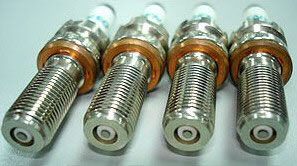Right. Cutting off/griding off/or otherwise removing the ground electrode is the way to go. And Einstein and da Vinci both would agree. Completely impractical you say? And yet, we should still do it? Which is it?
I do understand compromises in engineering. But which is it, do we leave it on or take it off?
And 50,000-mile spark plug changes? Even my old '99 and '00 cars go 100,000 miles.
Originally Posted By: Shannow
Originally Posted By: kschachn
So the plug designers are missing out on some sort of benefit that they don't know about?
Originally Posted By: friendly_jacek
Speaking of hacking off plugs, lots of people cut ground strap short, call it side gapped and swear by the benefits. I have never done it myself, but tempted.
If you had the remotest idea about spark ignition, kernel growth and access speed into the bulk gasses, you wouldn't be making such comments.
The designers know what they are doing, but they are stuck in a compromise world.
The mentioned partial side gap is a great plug...sharp edges, and full access for the kernel to the bulk gasses...a great spark-plug for igniting gasses (use to make them myself).
However sharp edges erode very very quickly, making it a short lived plug, in an era when people expect to leave them in for 50,000 miles.
Indexing plugs is a benefit in plug optimisation for a "regular design"...but completely impractical in a manufacturing of maintenance world.
Modern plug construction is more for going the distance distance than optimum spark plug design.
Look at the Bosch plus 4...rounded electrode surfaces aren't goo for sparks, they are good for long life...spark only ever jumps 1 electrode at a time, 4 just means that there's another surface when the other(s) wear out. location of the gap gives it not bad access to the gasses in say a pentroof chamber, not the best for a SBC.
The above isn't somethign that the designers don't know...they are stuck in a compromise world where 50,000 mile plug changes are the norm, and will sell many more OEM plugs that way.



